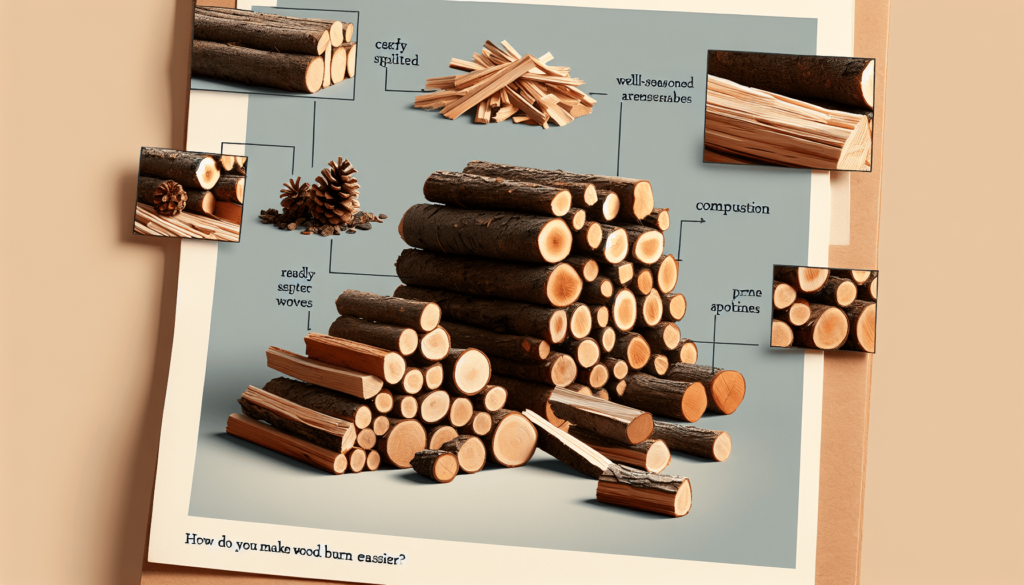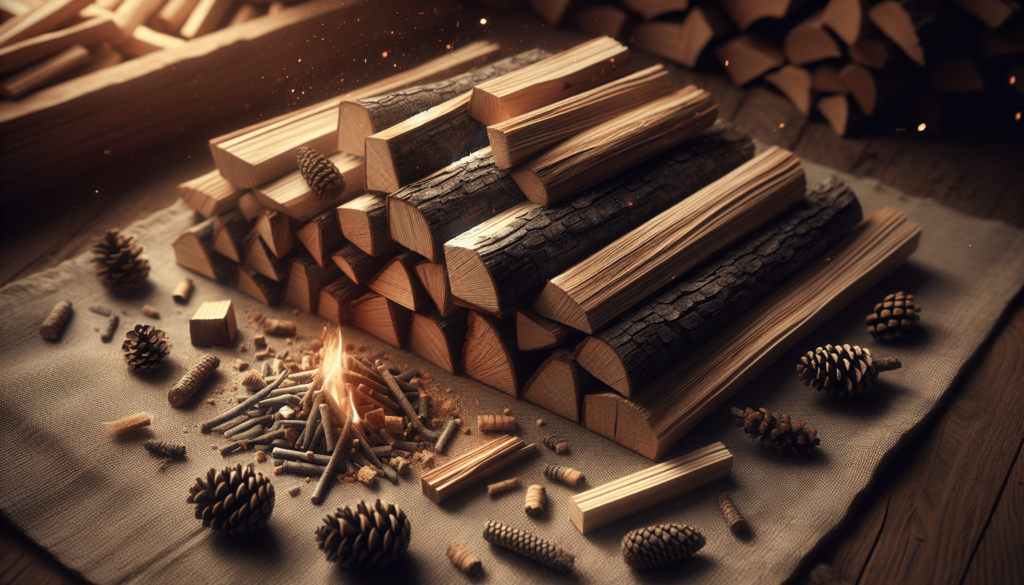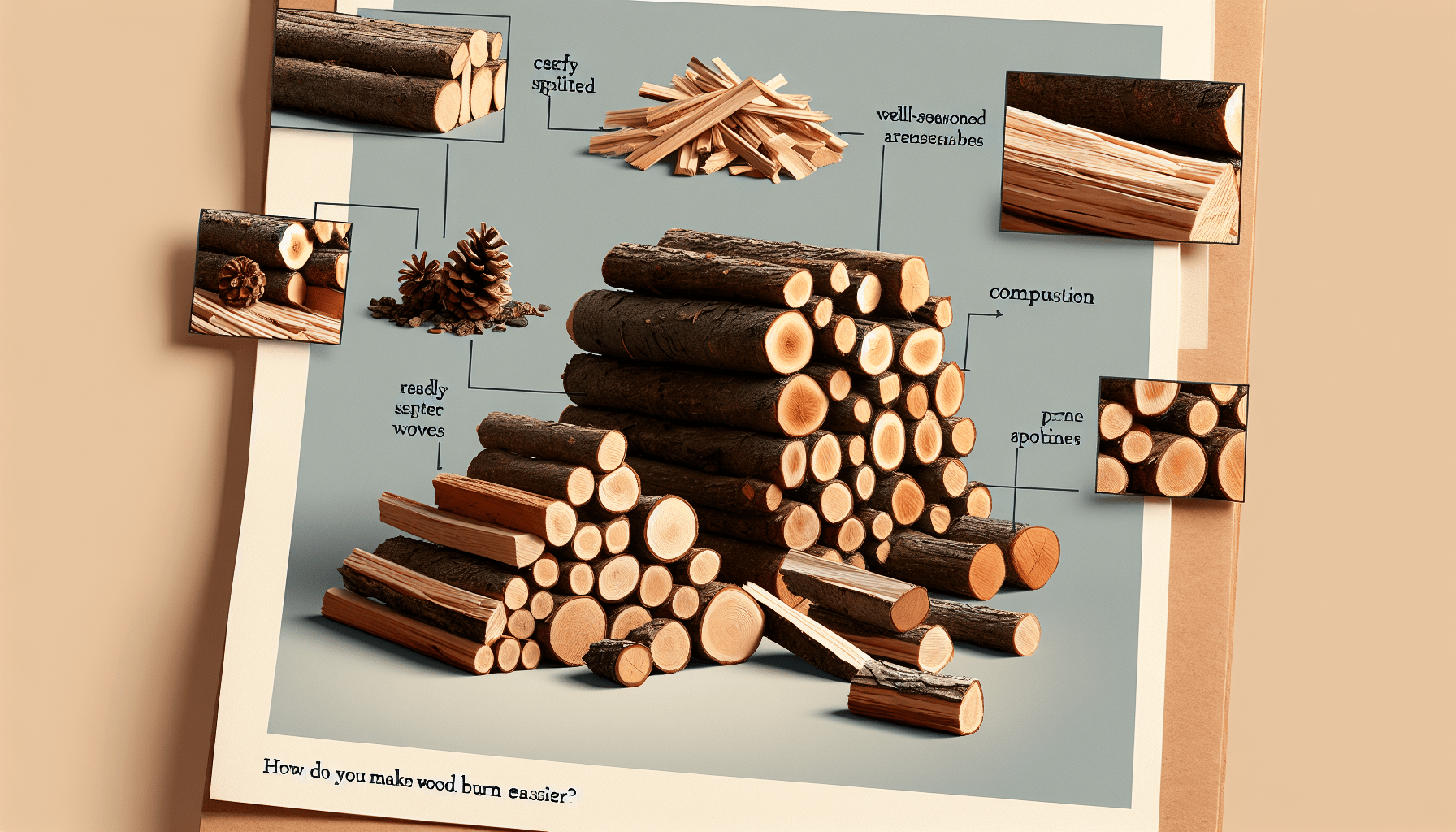How do you make wood burn easier? That’s a question I’ve found myself asking on cold winter nights, staring at the stubborn logs in my fireplace as they mock my attempts to start a roaring fire. It’s like they’re keeping secrets from me. You’d think this whole ordeal would come naturally—it’s wood and fire for goodness’ sake—but there’s a bit of an art and science to it. Let’s unravel this together. Let’s figure out how to make wood burn easier without feeling like we’re taming a wild beast.
Understanding the Basics of Wood Burning
Before you even get to the part where you see flames dancing, it’s important to grasp some basic concepts about wood burning. Knowledge is power, after all, even if it’s just to win an argument about how not to screw up starting a fire.
The Importance of Dry Wood
One of the main things is the dryness of the wood. Moisture is your worst enemy when it comes to burning wood.
Why Moisture Matters
Water and fire are natural enemies. When wood is wet, it contains a high moisture content that makes it incredibly difficult to catch fire. Imagine trying to light a soaked sponge on fire—it’s just not going to happen. That’s sort of what happens with wet wood.
How to Measure Moisture Content
You might be thinking, “Well, how dry is dry?” Good question. The moisture content should be below 20% for optimal burning. You could use a moisture meter to measure this. It’s a small investment, like $20-$30, but it’ll save you from a lot of frustration. It’s like your little secret weapon in the war against pesky, uncooperative logs.
Types of Wood and Their Burning Properties
Not all wood is created equal. Some wood burns like a dream, while others might as well be used to build a cabin rather than burn it down.
Softwood vs Hardwood
Not trying to sound like a lumberjack here, but understanding the difference between softwood and hardwood can make a world of difference.
| Type of Wood | Characteristics | Burning Benefits |
|---|---|---|
| Softwood | Comes from coniferous trees like pine and spruce. Generally less dense. | Burns quickly and produces a lot of creosote. Great for kindling. |
| Hardwood | Comes from deciduous trees like oak, maple, and cherry. Denser and heavier. | Burns longer and hotter. Produces less creosote. Ideal for main fuel. |
The Ideal Wood Types for Burning
If you really want to be the Leonardo da Vinci of fire building, you should know which woods are top-notch for burning. Oak, maple, and ash are excellent choices. They burn long and hot, making them perfect for those cold nights when you need the fireplace to actually warm the room rather than just look pretty.

Preparing Your Wood for Burning
Knowing your wood type is great, but preparation is key. Think of it like prepping a meal; you wouldn’t just throw raw stuff into a pot and hope for the best. Well, maybe you would, but the results might be less than stellar.
Splitting Wood
Big logs are hard to burn. Splitting wood increases the surface area, making it easier to catch fire.
The Art of Stacking
How you stack your wood is surprisingly important. It’s not just about aesthetics, although a neatly stacked pile does have a certain rustic charm.
Criss-Cross Method
For optimal airflow, use the criss-cross stacking method.
Fire Starters: Nature’s Little Helpers
You wouldn’t believe the difference that good fire starters can make. No, I’m not talking about lighter fluid or gasoline. Let’s keep it safe and sane here.
Types of Fire Starters
Here are some types of fire starters you might find useful:
| Type | Description | Pros | Cons |
|---|---|---|---|
| Commercial Fire Starters | Ready-made and easy to use, like pine cones dipped in wax or artificial fire logs. | Convenient and long-burning | Can be pricey |
| Homemade Fire Starters | Uses household items like dryer lint, wax, and egg cartons. | Cheap and effective | Requires a bit of DIY effort |
| Natural Fire Starters | Things like birch bark, pine needles, and small twigs. | Free and environmentally friendly | Might not be as reliable |

The Right Way to Build a Fire
Building a fire isn’t just about throwing logs together and hoping for the best. There’s a method to the madness.
The Teepee Method
Arrange your kindling in a teepee shape. This method allows for good airflow, which is crucial for igniting the fire.
The Log Cabin Method
Another popular method is the log cabin style. You stack larger logs parallel to each other and then place smaller logs perpendicular to create a square shape. It’s a bit more stable and long-lasting.
Lighting the Fire: Techniques to Try
Here’s where the fun (and slightly frustrating) part comes in – lighting the fire. And no, we’re not going to just soak the whole thing in lighter fluid.
Using Matches or a Lighter
Long matches or butane lighters work best. They let you get into those hard-to-reach spots.
Newspaper and Kindling
Crumple up some newspaper and place it at the base of your fire lay. Light this first; it will ignite the kindling.
Keeping Your Fire Going
Starting the fire is one thing. Keeping it going is another beast altogether. It requires the right kind of maintenance.
Adding Logs Gradually
Don’t just dump logs on a fledgling fire. Add them gradually, at intervals, to keep the fire from suffocating.
Managing Airflow
Air is almost as crucial as the wood itself. Ensure there’s enough airflow to keep those flames alive.
Safety and Maintenance
Let’s not forget about the safety aspects. We want a cozy fire, not a raging inferno.
Regular Chimney Maintenance
A clean chimney is a happy chimney. Make it a habit to check your chimney at least once a year to remove creosote buildup.
Fire Extinguishing Techniques
In the off chance that things go awry, you should know how to effectively put out a fire. Sand, baking soda, or a proper fire extinguisher are ideal tools for this.
Troubleshooting Common Issues
Because not all fires go according to plan, here are some common issues and how to fix them.
Smoke Problems
If your fire is producing too much smoke, it could be a sign of poor air circulation or wet wood.
Fire Dying Quickly
If your fire’s going out too soon, it’s probably due to insufficient fuel or poor arrangement of the logs.
In Summary: The Key Takeaways
If there’s one thing I’ve learned, it’s that making wood burn easier is a skill that can be honed. And like any skill, the more you practice, the better you’ll get at it. Here’s a quick recap of the essentials:
- Always use dry wood with less than 20% moisture content.
- Know your wood types: Softwoods for kindling, hardwoods for the main fuel.
- Properly split and stack your wood for optimal airflow.
- Use effective fire starters, whether commercial, homemade, or natural.
- Build your fire using a structured method like the teepee or log cabin style.
- Light the fire carefully and manage the airflow.
- Maintain your fire and ensure safety measures are in place.
So there you have it, the not-so-secret secrets to making wood burn easier. Here’s to fewer failed attempts and more successful, roaring fires that make those winter nights a little cozier. Cheers!

